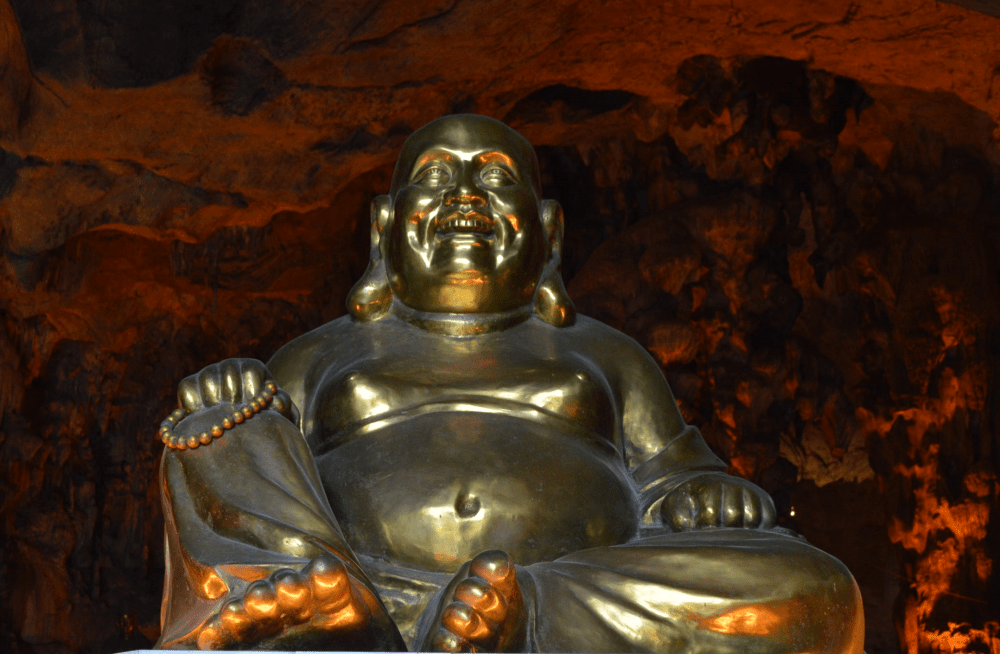Budai is actually not a Buddha, he is a Bodhisattva who is very popular in China and worldwide. Chinese Buddhists believe that Budai is an incarnation of the “future” Buddha who is known as Maitreya.
The prophecy says that Maitreya will return again in the distant future when sentient life has become morally disoriented. They have morally lost their way because the Dharma and the teachings of Shakyamuni Buddha have been discarded and forgotten.
However, Maitreya will come in the future and become a fully enlightened Buddha. He will then reteach the Dharma and lead all sentient life to join him in Nirvana. There is a monument in southwest China dedicated to Maitreya called the Leshan Buddha. It is the most prolific Maitreya Buddha statue in the world.
The History and Meaning of Budai
In Chinese folklore, Budai is a figure whose name means “cloth sack”. This is because of the cloth sack full of his few possessions that he was always seen carrying. Budai is considered to be a Buddhist deity, but was also a monk that lived in Zhejiang China during the 10th century.

The Happy Buddhas are very distinct from other Buddha statues because Budai is commonly depicted as having a big belly and is always laughing.
Paradoxically, laughing Buddha is commonly confused with Shakyamuni Buddha. The laughing Buddha was certainly not the original Buddha. Nonetheless, he was considered a symbol of contentment and also a symbol of good and loving character.
Budai is a Creation of Chinese Buddhism
Budai is a deity who is derived from Chinese Buddhism. Chinese Buddhism is basically Mahayana Buddhism with Chinese characteristics. From Sanskrit, Mahayana translates into English as “great vehicle”. This version of Buddhism is generally more progressive in contrast with the more conservative nature of the traditional Theravada school. As such the meaning of Budai and other Chinese deities is unique from Buddhas and Bodhisattvas outside of China.
Comparing Mahayana teachings to the teachings of Theravada Buddhism is similar to comparing the old testament of the Christian Bible with the new testament. In Mahayana teachings, Nirvana is apparently made more accessible to a wider set of Buddhists instead of only a devout group. It follows that the Laughing Buddha is more welcoming and symbolizes that the average person can become enlightened.
These Buddha statues are sometimes depicted holding a fan which grants wishes. Additionally, it is said that rubbing his belly will bring wealth and good luck to you. Sounds a bit like Santa Claus? However, Budai preceded Santa so it is the other way around.

